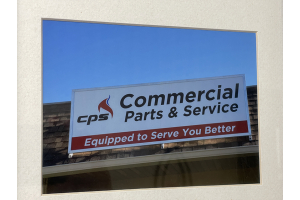Energy Saving Tips For Your Commercial Kitchen

 Many commercial kitchens and restaurants today are taking the initiative to “go green”. You read about it in industry magazines and hear about it on the news, but what does going green really mean? For different organizations, it can mean different things but some likely components of the plan to go green include sustainability and energy saving efforts.
Many commercial kitchens and restaurants today are taking the initiative to “go green”. You read about it in industry magazines and hear about it on the news, but what does going green really mean? For different organizations, it can mean different things but some likely components of the plan to go green include sustainability and energy saving efforts.
If you’re reading this and already thinking that going green only benefits the environment, you’re wrong. Taking steps towards increased sustainability and decreased energy usage has the potential to save you a lot of money over time. There are some upfront costs and time investments required, but overall, the rewards outweigh them. Wondering how you can get started? Going green isn’t something that happens overnight, but if you want to get started you can try utilizing some of these energy savings tips for your commercial kitchen.
Here’s what you can do
1. Purchase Energy Efficient Equipment
You don’t have to sacrifice quality or features just to get energy efficient equipment for your commercial kitchen. Cut back on greenhouse gas emissions and save on your utility bill with ENERGY STAR certified equipment. Purchasing such equipment may be a little more costly initially, so be sure to ask about rebate offers. You can also ask one of our technicians about retrofitting your older equipment with new parts or components to increase energy efficiency.
2. Maintain Your Current Equipment
By taking care of your existing equipment you can maximize efficiency both from a productivity and energy standpoint. Keeping equipment that is prone to buildup of dirt, grease, and food particles, such as a fryer, properly cleaned will help ensure it’s running at its most efficient rate and using less energy. Properly maintained equipment also means smoother operations and less downtime.
3. Educate Employees
In some instances, you will be able to lower utility bills simply through educating your employees on ways that they can help. Train kitchen workers to use colder water when they can, to turn off equipment when it’s not in use, and to be mindful of how soon they fire up equipment before the start of a shift. Getting employees on board with your plan to reduce energy consumption won’t cost you anything but can have amazing benefits.
4. Strategically Arrange Your Kitchen
If your kitchen is already set up and running, this last step may take some serious time and effort, but will be well worth it. Set up your kitchen in a way that makes sense, keeping heating and cooking units separated from cooling and refrigeration units. By keeping practical distance between the hot and cold units, these pieces of equipment do not need to work as hard and therefore use less energy.
Moving towards a more environmentally friendly kitchen requires some planning, time, and investment, but as you can see, the rewards of lower utility bills can make it all worthwhile. Not only will you save money, but you will also be able to communicate the steps you are taking to your customers. Consumers today are becoming more and more conscious of their environmental footprint and are especially interested in purchasing from restaurants and vendors who are taking the necessary time to reduce their energy and increase sustainability.
If you’re looking to purchase new, energy-efficient equipment for your commercial kitchen or upgrade older appliances with new parts, check out our extensive inventory today! CPS can help you keep your kitchen running smoothly and efficiently.




